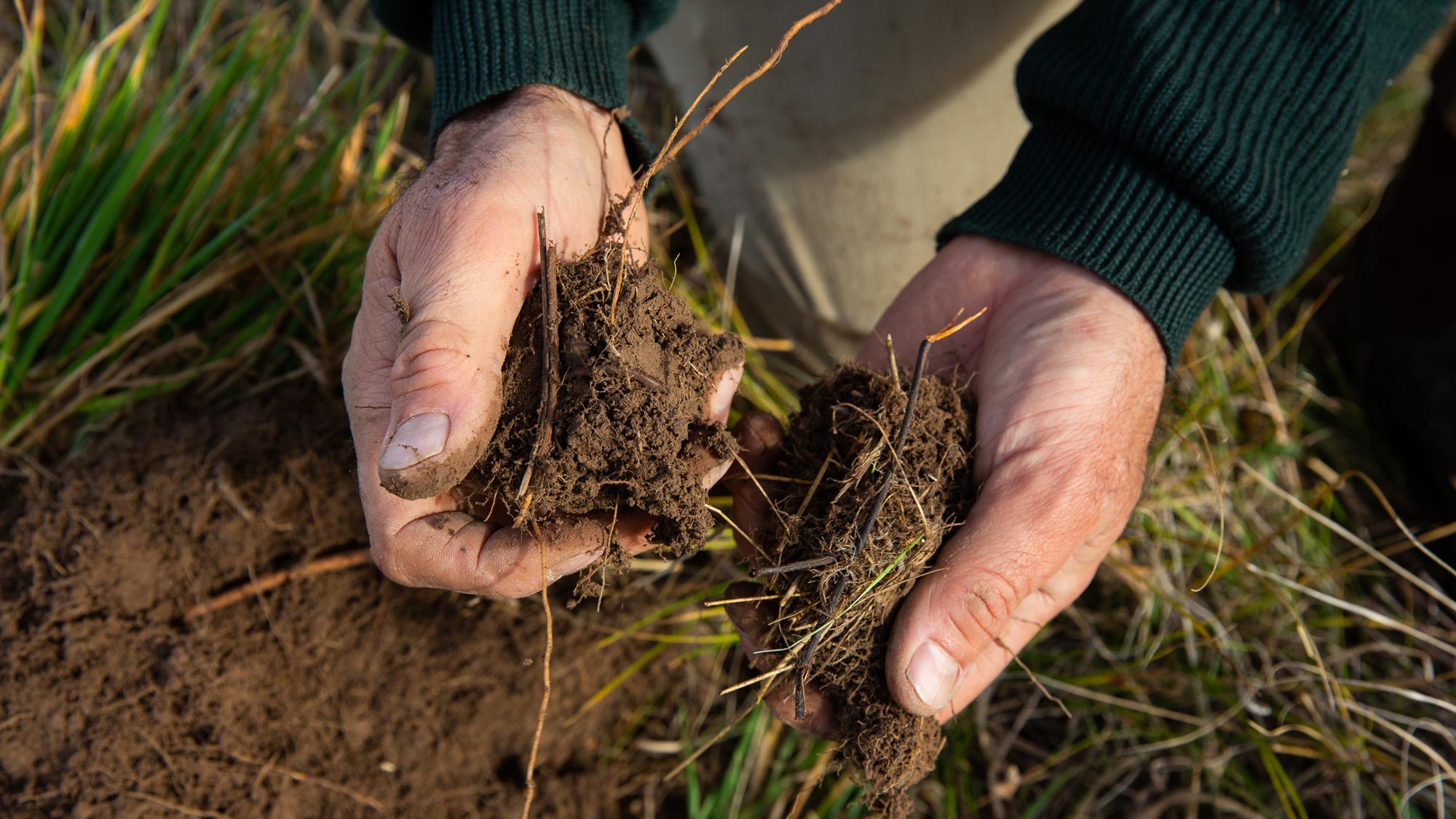Tool 6.4 ‘Look, smell, feel’ tool
This can be done in conjunction with the Tool 6.3 Earthworm sampling or as a separate exercise.
Use a spade and dig a square (about 20 cm x 20 cm) to a depth of 10 cm and take 8–10 samples from different areas in the paddock. Record your observations in Table 6.2.
Table 6.2 The "Look, smell and feel" tool
ACTION |
REASON/INDICATOR |
YES |
NO |
|
The Look Test |
|||
|
Does the soil surface have the right amount of groundcover? |
>70% in high rainfall areas and >1,500 kg/ha litter >40% in low rainfall areas |
|
|
|
Are the plant crowns at or below the soil surface? |
Elevated crowns indicate soil loss |
|
|
|
Any evidence of earthworm castings, worm holes or spider activity? |
Worm holes aid water infiltration |
|
|
|
Is the soil a dark, chocolatey colour? |
Generally, the darker the soil, the higher the organic matter |
|
|
|
Are there lots of plant roots? |
Lots of roots indicate the soil is health and providing abundant food for the plant, few constraints for growth |
|
|
|
The Feel Test (rub the soil between your fingers) |
|||
|
Does the soil feel soft and crumbly? |
Coarse, gritty, gravelly or stony indicates a sandy texture/low water holding capacity |
|
|
|
Does the soil break easily into particles the size of breadcrumbs? |
Indicates good structure and high levels of organic matter |
|
|
|
Is the soil soft, moist and easy to dig up? |
Hard, dry soil indicates low water holding capacity |
|
|
|
Is the soil surface soft and friable? |
Easily penetrated by the point of a pencil? |
|
|
|
The Smell Test (pick up a handful of soil) |
|||
|
Does a handful of soil smell fresh and earthy? |
Foul odour is often caused by improper drainage and lack of aeration |
|
|
The more “Yes” boxes you ticked in Table 6.2, the healthier the soil in the sampled paddocks.
Use this simple table to record your observations for each of the samples taken in a paddock. Repeat the sampling at the same time next year in similar locations in a paddock. Track the trends over time to see if your management practices are also improving the health of your soil.
While you can’t change your soil type, you can influence soil quality by increasing groundcover and organic matter levels (see Chapter 6.2).






